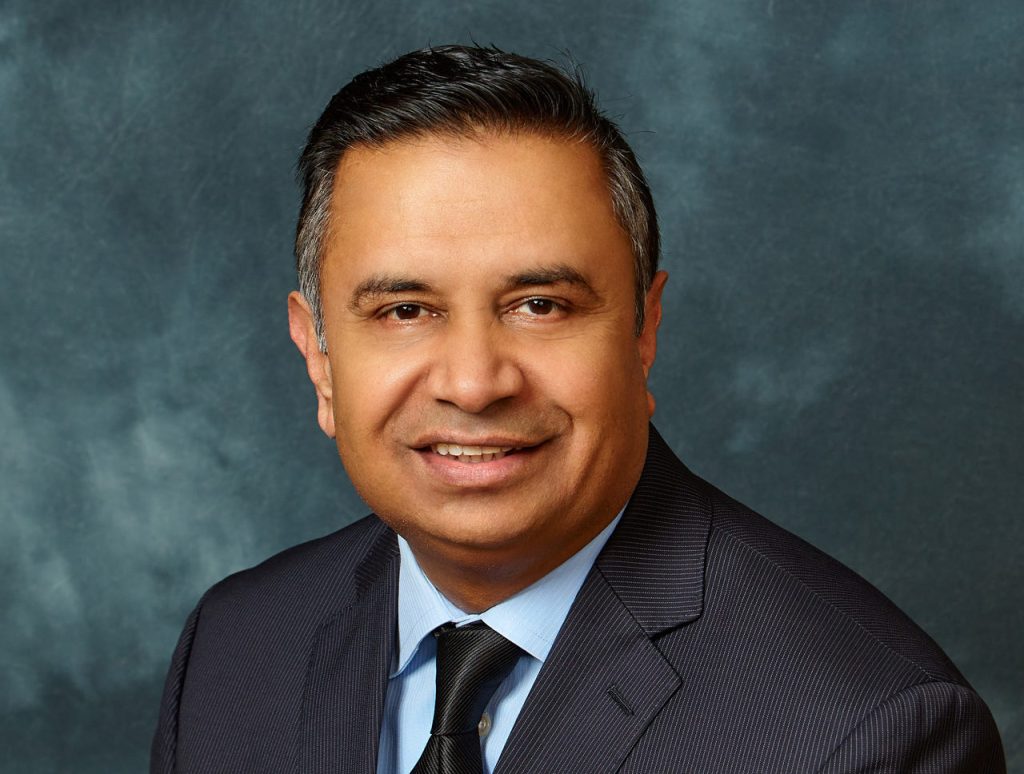Speaking with large U.S. institutional investors like the State Board of Administration of Florida provides a dynamic touchpoint these days. The SBA of Florida manages a number of different investment funds and trust clients, representing an asset total of over $206 billion—the largest portion of this is the Florida Retirement System Trust Fund, which was valued at approximately $163 billion as of June 30, 2019.
As markets have been volatile and the world of fund allocation shifts to meet an evolving set of investment realities, challenges and opportunities brought about by COVID-19, senior portfolio manager in the Strategic Investments Group at the SBA of Florida Shoaib Khan shared his intel, of interest to managers seeking an allocation as well as market practitioners inclined to understand how large pension funds are viewing the world and adjusting their sails accordingly.


Q: Thank you for agreeing to speak to Worth readers at this time of change, Shoaib.
You started your career in the ‘90s at the City of Miami General Employees’ & Sanitation Employees’ Retirement Trust, where you rose to CFO, and after a number of years at funds and other private sector jobs, you more recently returned to the public side as a senior portfolio manager in the Strategic Investments Group at the State Board of Administration of Florida in 2017.
What would you say about limited partners on the public side, given your experience? What has evolved during that time span?
A: Thank you for having me, Nancy.
Limited partners, public or private, generally have the same objectives and goals. The differences have to do with organizational processes. Different types of LPs come to different conclusions and take actions in different ways. Public entities tend to have fewer resources, but there is deep dedication from professionals on both sides.
The sheer availability of information has increased meaningfully since I started my career at the City of Miami. Tech developments around gathering, analyzing and understanding data stick out to me as one of the greatest growth areas during this time span, and indeed, broader data availability can be a great equalizer amongst the various types of allocators.

There is currently far more software to slice and dice the data that we obtain than there used to be, a huge value add. Transparency around information has shifted along with ease of software use and finally, the pricing has come down for many things. This picture represents a real game changer for the public limited partner community.
Asset allocation has also evolved; there is a much better understanding of investment strategies beyond classic fixed income and equities, outside of the traditional buckets. Real assets, infrastructure, private equity and various hedge fund strategies are more appreciated now. Realization is not just about performance, it’s about diversification. Capital preservation is understood more comprehensively than it used to be and the discussions around it are more dynamic.
In addition to the data revolution and the evolution of and broader adoption of investments in nontraditional or ‘alternative’ asset classes is the very notable increased interest in non-U.S. investments. There is a much broader understanding of and appreciation for the risk and reward inherent in emerging markets investments, in Brazil, China and India, along with a more specialized interest in (generally) more developed Europe.
While emerging markets are usually more volatile, in broad terms they are much more evolved and offer more liquidity than they used to. This is coupled with the fact that investors tend to be open to other regions, even considering certain recent sentiments around keeping things local, which are often more politically driven. There is a wide growth element in India with more to come. Recent geopolitical considerations hamper this in some ways, and of course, emerging markets do present hiccups. Still, investors may have trouble hitting targets if they don’t look internationally, so the universe will continue to expand and transform. The transference of say factory work from China to Vietnam and South East Asia more broadly is continual and developing; the countries absorbing more or less foreign direct investment and why is certainly something to watch.
Particularly now, in light of international challenges due to COVID-19, it’s important for investors to maintain a long-term view.
What strategy sectors or opportunities interest you most in this current climate, as a U.S. institutional investor?
We can look at this through several lenses.
Considering the top-down view, the COVID-19 human and economic toll has been considerable and is worth lamenting as it lays bare global challenges. While the situation hones the current and future opportunity set, as people approach solutions to a costly episode, it cannot be overstated how regrettable the situation is to date.
With respect to the markets, there was a late first quarter, beginning of second quarter 2020 liquidity crunch, although many feared much worse and continue to brace for another leg down on that front. Economies were impacted in ways that will continue to be revealed. Recovery will come in phases. Short-term, largely trading, opportunities continually present themselves. Longer term, we are facing temporary distress at good companies.
At the State of Florida, we’ve increased our allocation target for stressed and distressed credit, as we anticipate an increase in bankruptcies and defaults over the next 12 to 18 months based on fundamental credit analysis. There are opportunities in this space, and we already do have a fair amount of exposure, though leverage levels and light covenants are concerning in certain scenarios. Bankruptcy zombie companies may present opportunities.
We are also looking at structured credit, mortgage-backed securities and CLOs, in particular.
Industry consolidation will surely present investor opportunities and a favorable environment for roll-up execution strategies.
Of course, broad volatility is still expected in equities and fixed income.
Another area that is on our radar is the energy sector. Oil price and GDP-related pressure, COVID-19 reduced demand and a lack of funding on the public side for energy adds to the 2014 depression of this sector. It’s another leg down. Retail investors may not be coming back in short order, and so the opportunity is geared toward long-term investors. Locked up capital may benefit from discounts in the sector, given that many banks are currently less inclined. Structured deals and select opportunities could be quite favorable, although the timing is uncertain.
Are you participating in co-investments and if so, what looks interesting and why?
The organization does participate in co-investments.
I’m a part of the strategic investments team, and we are not overly active in co-investments, rather we focus on co-mingled funds. We are preparing to execute co-investments, but currently, we tend to leave security selection and general bottom-up decision making in the hands of our fund managers.
With co-investments, it’s a question of exposures that aren’t right-sized and approaching risk management in a different way. We are building toward that.
What advice would you give to general partners who are fundraising during the pandemic?
Just like any other period of time, this window is about balancing challenges and opportunities while being realistic about what you know and where your talents are.
I tell managers to stick to their knitting, stay focused on what they know best and avoid style drift. We like to see a demonstrated, replicable track record and specialization.
We are also cautious about the size of capital raises and managers launching very big funds just because they can. Does the pipeline of opportunity matched with your selection process call for a $5 billion or a $20 billion fund? Where is the opportunity going? How will your investment team be prompted to allocate based on the size of the fund? Will you be sitting on cash too long or deploying with less finesse to avoid sitting on cash? What fund size is appropriate, all things considered?
We look for a partnership approach. We take a long-term view of the markets and our investment portfolio, and as such, we look for managers that are transparent during challenging times, firms that explain things and share information. We are inclined to invest with managers that are thoughtful and provide intelligent dialogue.
What do you think is most important for fund managers to consider as they look to partner with limited partners like you, the State Board of Administration of Florida?
Sometimes on the private side, opportunity evaluation is relatively quick. On the public side, it takes a bit longer.
Certain organizations can move forward with less track record. We need to be comfortable with demonstrable experience.
We generally don’t invest in Fund 1. We may consider investing in Fund 2. We most regularly start our relationship with a manager when they launch Fund 3, but this isn’t a fixed rule as it’s about realized track record. We don’t have a requirement around, say, the classic three-year track record. But public LPs are all different. That’s just us. We can be more subjective, but what is critical is a “clear as day,” black-and-white track record that isn’t based on unrealized valuations.
For example, if a team we know leaves a reputable firm and has no three-year track record as the new firm, but we can secure the proven track record from their prior employer, that could be a great opportunity. Generally, teams in that position are very driven and trying to prove themselves.
We’re not always a fan of asset gatherers that are too big and trying to invest in every strategy. A GP that is less transparent and holds cards too close to the chest isn’t great in our view either. We’re looking for partnership, integrity, a strong diversified investor base and alignment of interests amongst investors.
As it’s a hot topic these days, please speak to diversity in asset management.
In general, diversity is very important in all walks of life. It adds value.
In asset management, we strive for collaboration and push back to enable better decision-making. Ideally, the people that make up an investment team or committee will have different views. Groups that consist of people with varied perspectives and backgrounds and are willing to speak up can collectively make better long-term investment choices, if all views are indeed being considered. Innumerable studies have shown this.
As allocators are generally making decisions of consequence and often taking high-ticket fund stakes, it’s critical that we have the broadest and richest set of informed views we can assemble.







